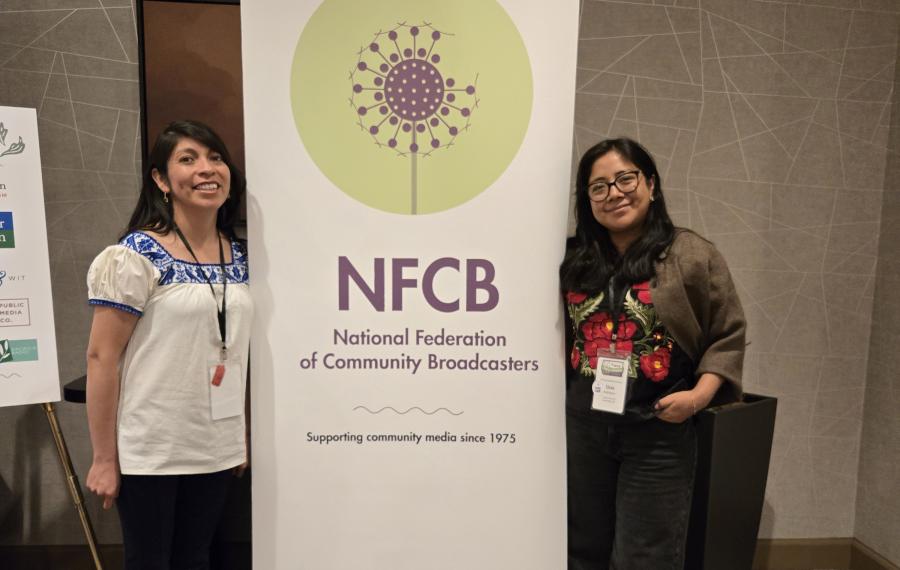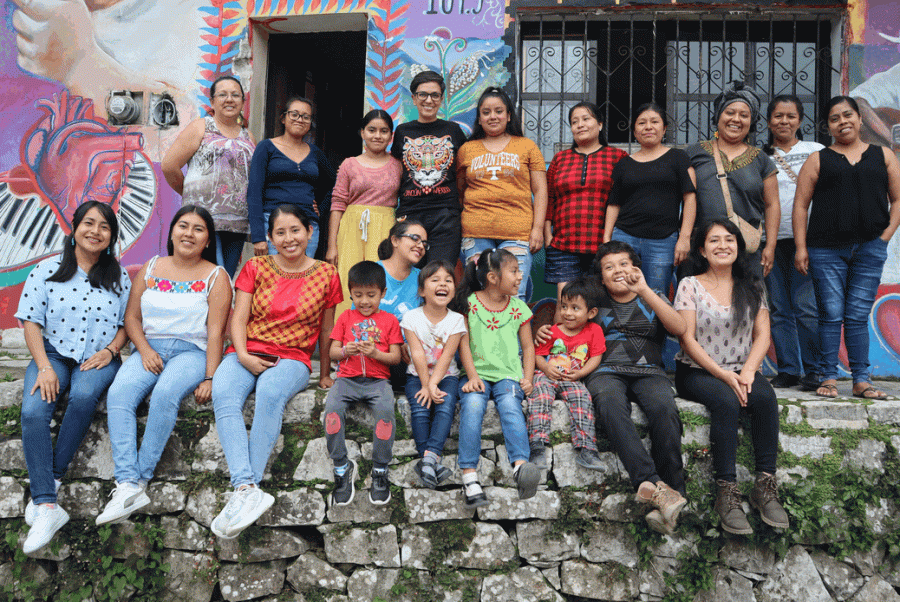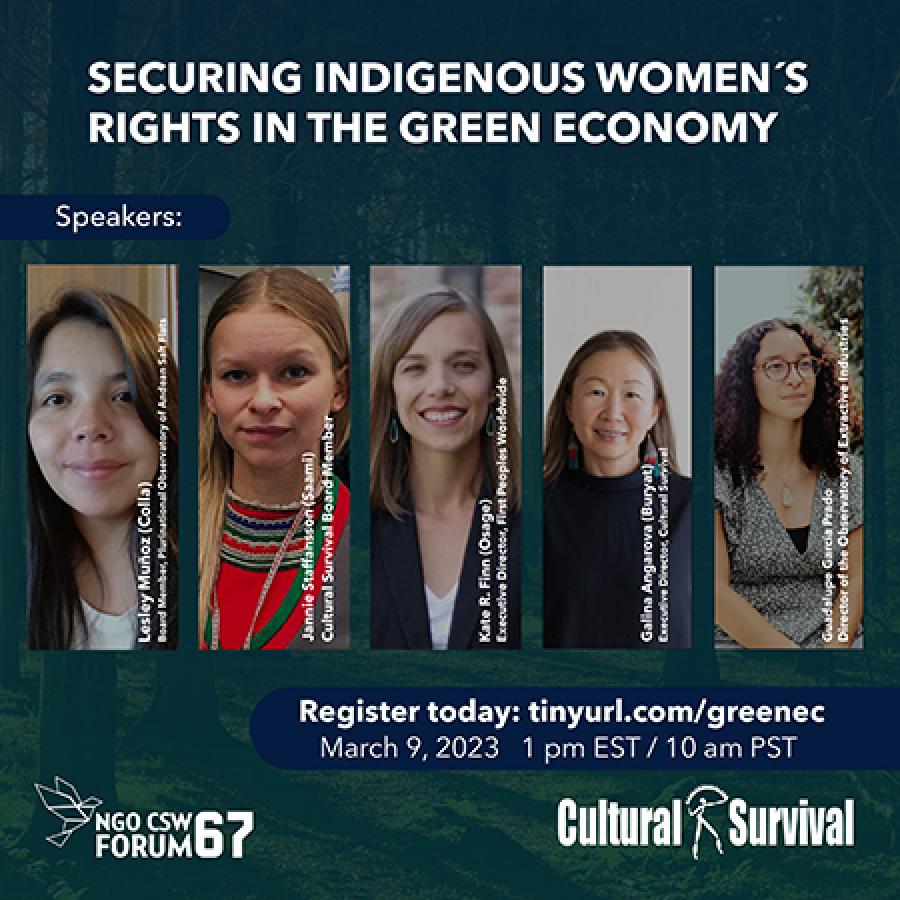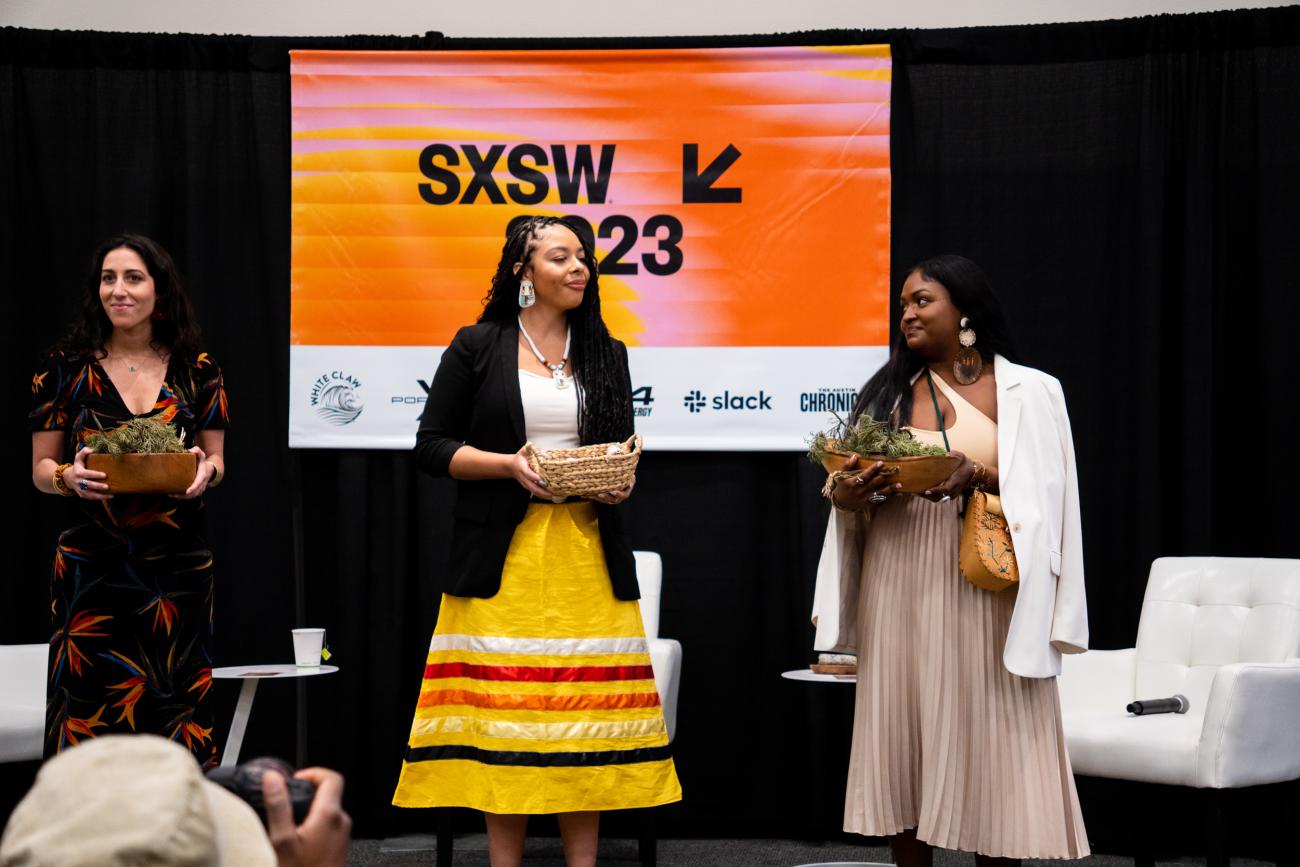
Indigenous economies around the world thrived before European contact. Our robust trade networks connected Tribes and the goods we produced, and people from all over the world gathered in what are now some of today’s modern cities to trade many valuable items. Our ancient highways, i.e., waterways (oceans, bays, rivers, lakes, and tributaries), connected Tribal communities all over the world. There was a time when individual Tribes spoke many languages besides their own; Elders say it was called a “trade language.” Urban areas like New York City and Miami have always been a place where trade fostered prosperity, allowing Tribes to devote significant time and resources to leisure, art, and cultural ceremonies. Our traditions of trade allowed us to adapt and prosper by trading with Europeans who brought steel, horses, fabrics, and even beads. We traded for what we wanted because we already had all of the necessities that life required. In other words, we didn’t just survive—we thrived.
Despite hundreds of years of colonization and attempts of cultural erasure, in 2023, we are seeing a strong resurgence of Indigenous economies. “Indian Sovereignty means re-equipping Indigenous Peoples with the dignity of self-sufficiency, the right not to depend upon the white man, the government, or even the Tribe. This is not a new notion. It’s only circling back to the ancient and most crucial of Indian values: understanding that the power of Tribal communities is founded upon the collective energy of strong self-sufficient, self-initiating, entrepreneurial, independent, healthful, and therefore powerful individual persons, human beings, Indians,” said Billy Yellowtail (Crow), a former Montana State senator and the first Native person to serve as a regional administrator of the Environmental Protection Agency.
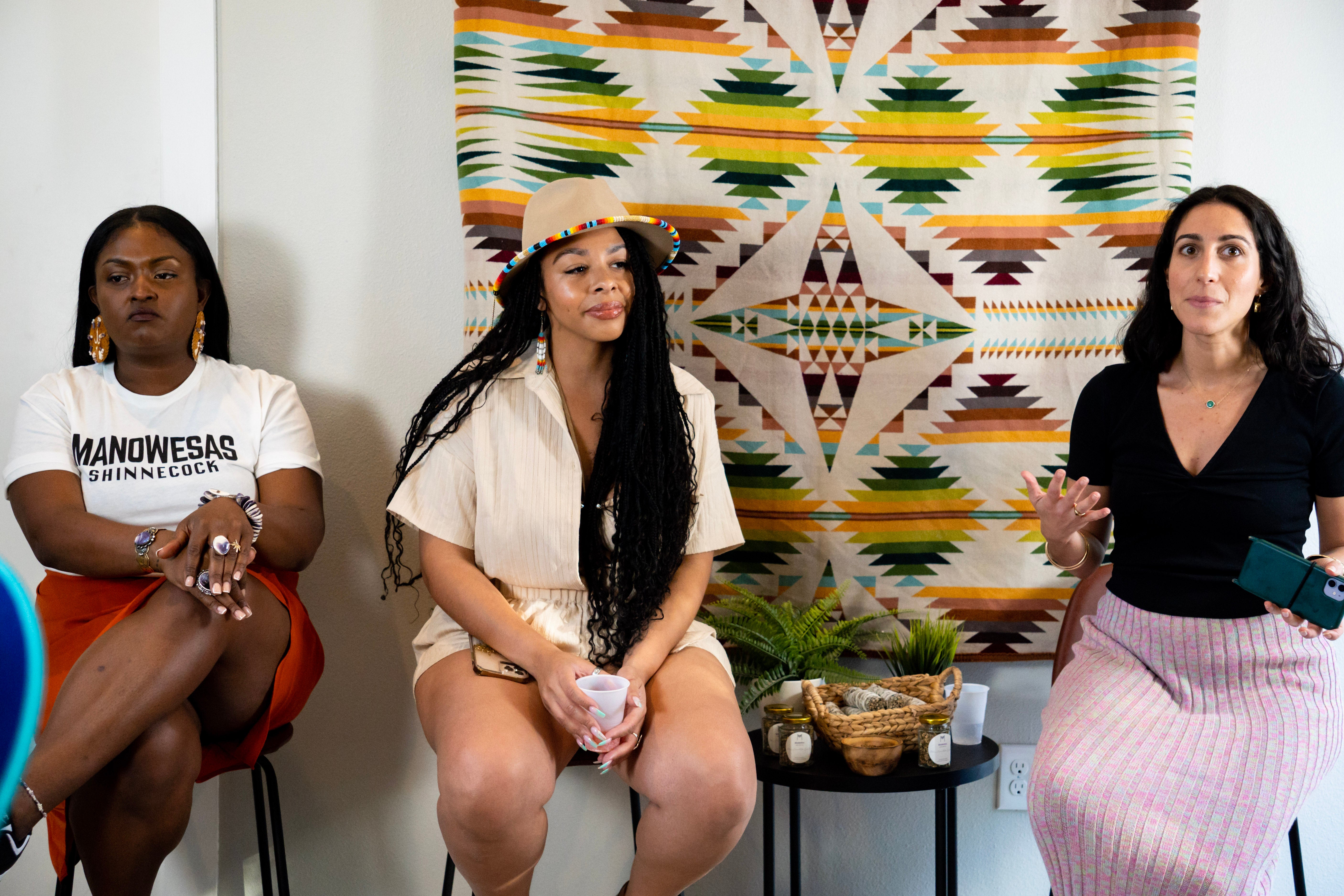
Chenae Bullock, Sutton King, and Julia Mande Host the First Indigenous House at SXSW. Photo by Rebekah Wise.
This year, over 300,000 people attended the 37th annual SXSW (South by Southwest) conference and festivals, which had the highest number of Native American participants in its history. SXSW is an annual conglomeration of parallel film, interactive media, and music festivals and conferences that take place in mid-March in Austin, Texas. There were nearly 30 different tracks in the conference focusing on areas as diverse as climate change policy and the future of music, film, and television. Although Indigenous inclusion and representation still have a way to go, this year’s festival featured more panels with Indigenous voices than ever. Variety and Illuminative partnered with SXSW to host an Indigenous Voices event that focused on examining the atrocities and human rights violations committed against Native American children at Native American Boarding Schools. Bryan Newland (Ojibwe), a citizen of the Bay Mills Indian community and the United States Assistant Secretary of Indian Affairs, was a panelist on the U.S. Indian Boarding School: Stolen Generations panel, which discussed the results of the U.S. Department of the Interior’s Federal Indian Boarding School Initiative Investigative Report and ways that this traumatic history continues to impact generations of Indigenous Peoples. Julia Mande, Managing Director of Adapt to Complexity, Sutton King (Menominee and Oneida), co-founder of Urban Indigenous Collective and Project Manager of the Indigenous Medicine Conservation Fund, and I formed a panel, “Indigenizing Systems,” that challenged the audience to imagine future innovative systems in economics, governance, communication, medicine, and more, and to explore the ways in which Indigenous cultures and traditions can be honored and revitalized in contemporary society.
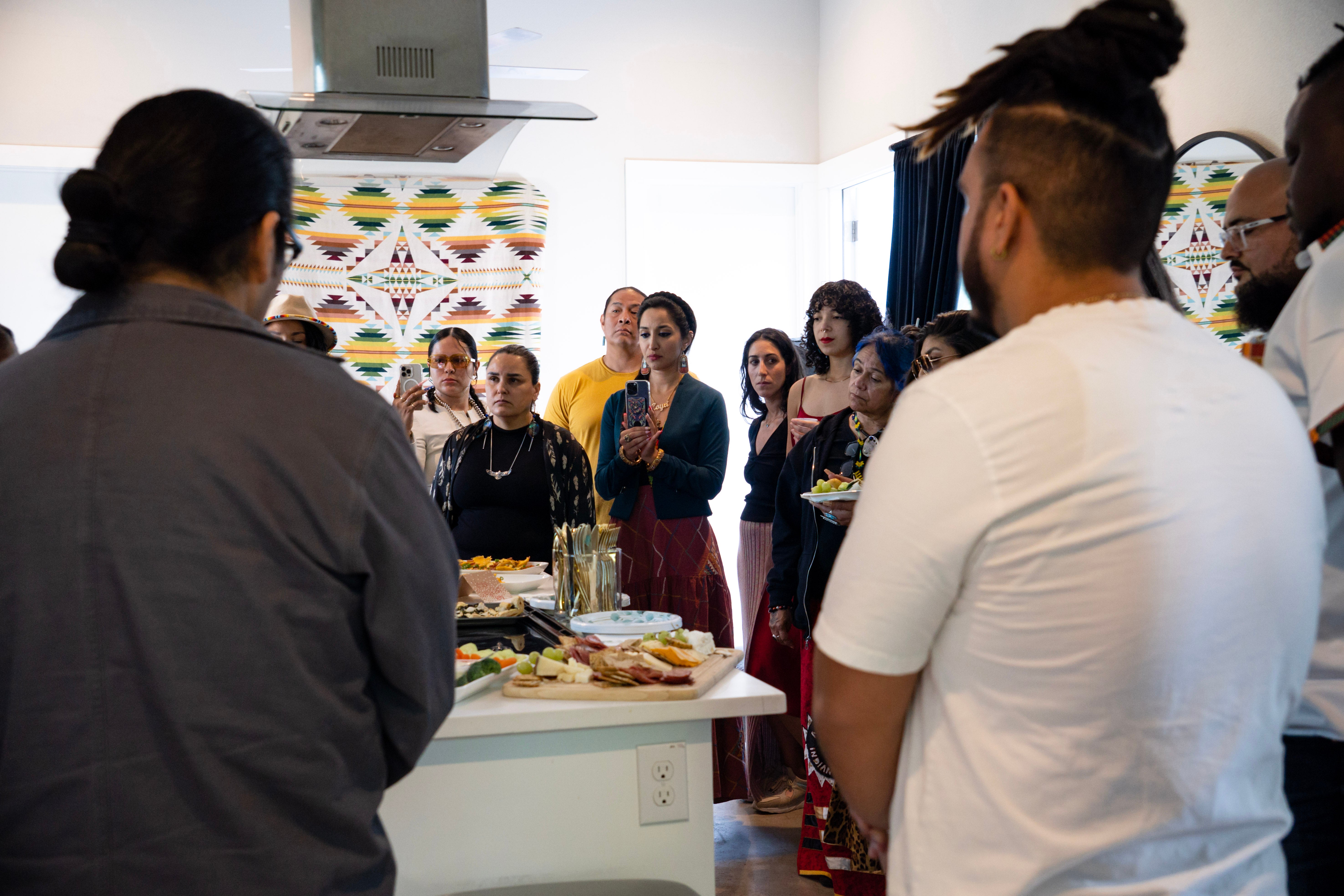
First Indigenous House at SXSW. Photo by Rebekah Wise.
Also for the first time in SXSW history, 10 Indigenous women hosted the soft launch of an Indigenous House for what hopefully will become an annual event. It was a sacred moment that provided a space for Indigenous communities to come together and discover one another amid 300,000 people in Austin, Texas. In attendance were Native American storytellers, film producers, artists, models, scientists, leadership coaches, founders, activists, and chefs. In our culture, we have a saying, “All my relations.” In that space, this shared phrase expressed the concept that we are related and connected in some way, no matter what industry we are in.
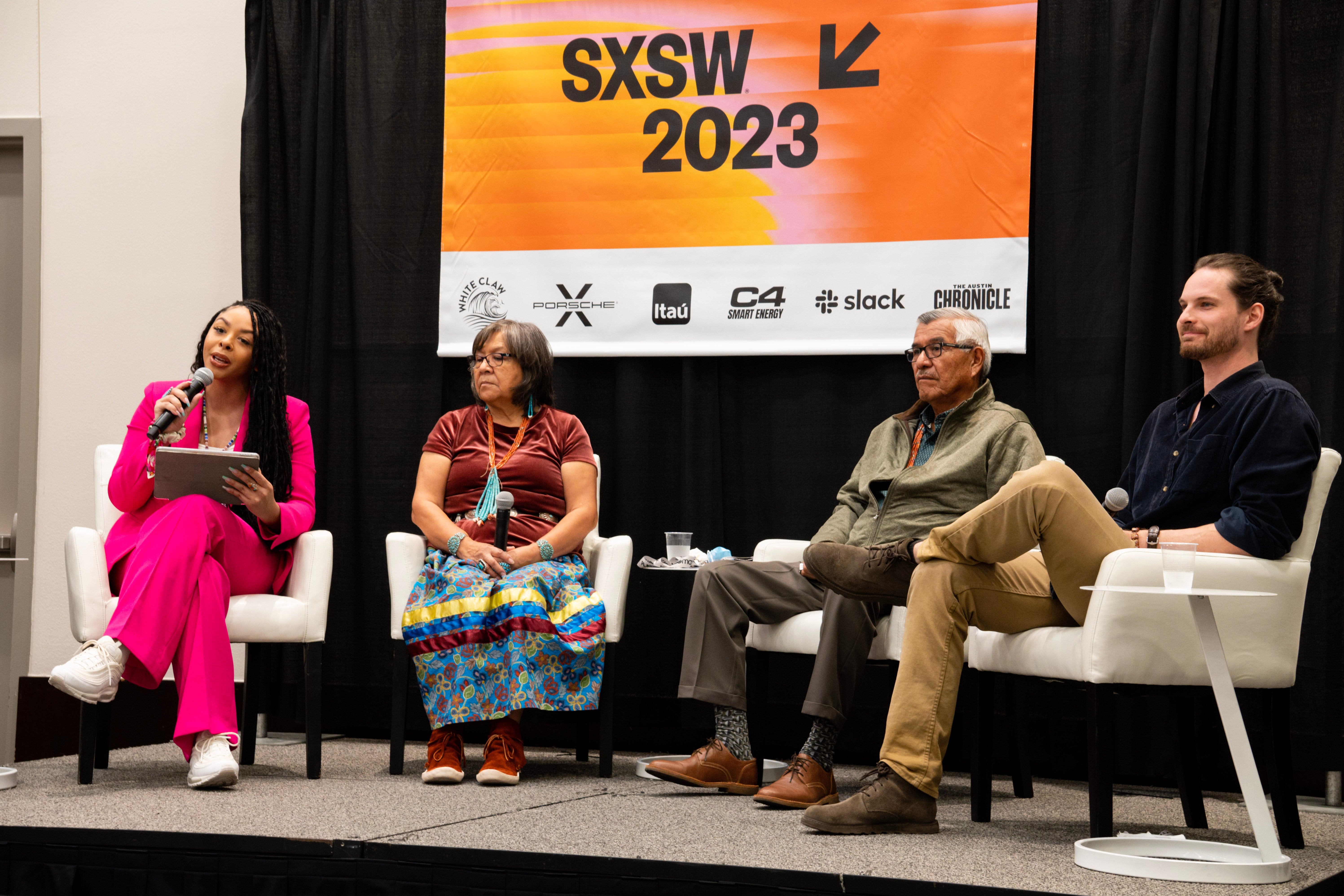
Sutton King moderating the Right Relationship to Plant Medicines panel at SXSW. Photo by Rebekah Wise.
Including Indigenous Peoples in global industries such as music, film, and technology has a multitude of benefits for our communities. Incorporating Indigenous Knowledge and practices into these industries can help us preserve, sustain, and grow our cultures. Maintaining the cultural heritage of Indigenous Peoples and promoting our unique perspectives and contributions to the world can also lead to increased pride and self-esteem within Indigenous communities. Economic empowerment can be achieved by providing job opportunities and training programs for Indigenous Peoples in these industries, helping to reduce poverty and increase the standard of living within Indigenous communities. It can also lead to increased self-determination and autonomy, as Indigenous Peoples are able to participate in decision-making processes that affect our communities.
The inclusion of Indigenous Peoples can also promote environmental conservation and social justice. Indigenous Peoples have a deep connection to the land and have developed unique methods of land management that prioritize conservation and sustainability. A prime example is the Climate Resiliency in Indian Country project of the First Nations Development Institute. This year, Indigenous grantees were awarded about $100,000 each for the Racial Equity Justice40 Project. This project is catalyzing a critical mass of Tribes and Native-led nonprofit organizations to conduct and operationalize climate change plans and amplify the power of traditional ecological knowledge. By incorporating our knowledge and practices, these industries can help promote environmentally responsible practices and prevent the destruction of natural resources. Indigenous Peoples have often been subjected to discrimination, exploitation, and human rights violations. Providing opportunities for Indigenous Peoples to participate in decision-making processes that affect our communities can help reduce marginalization and promote equality.
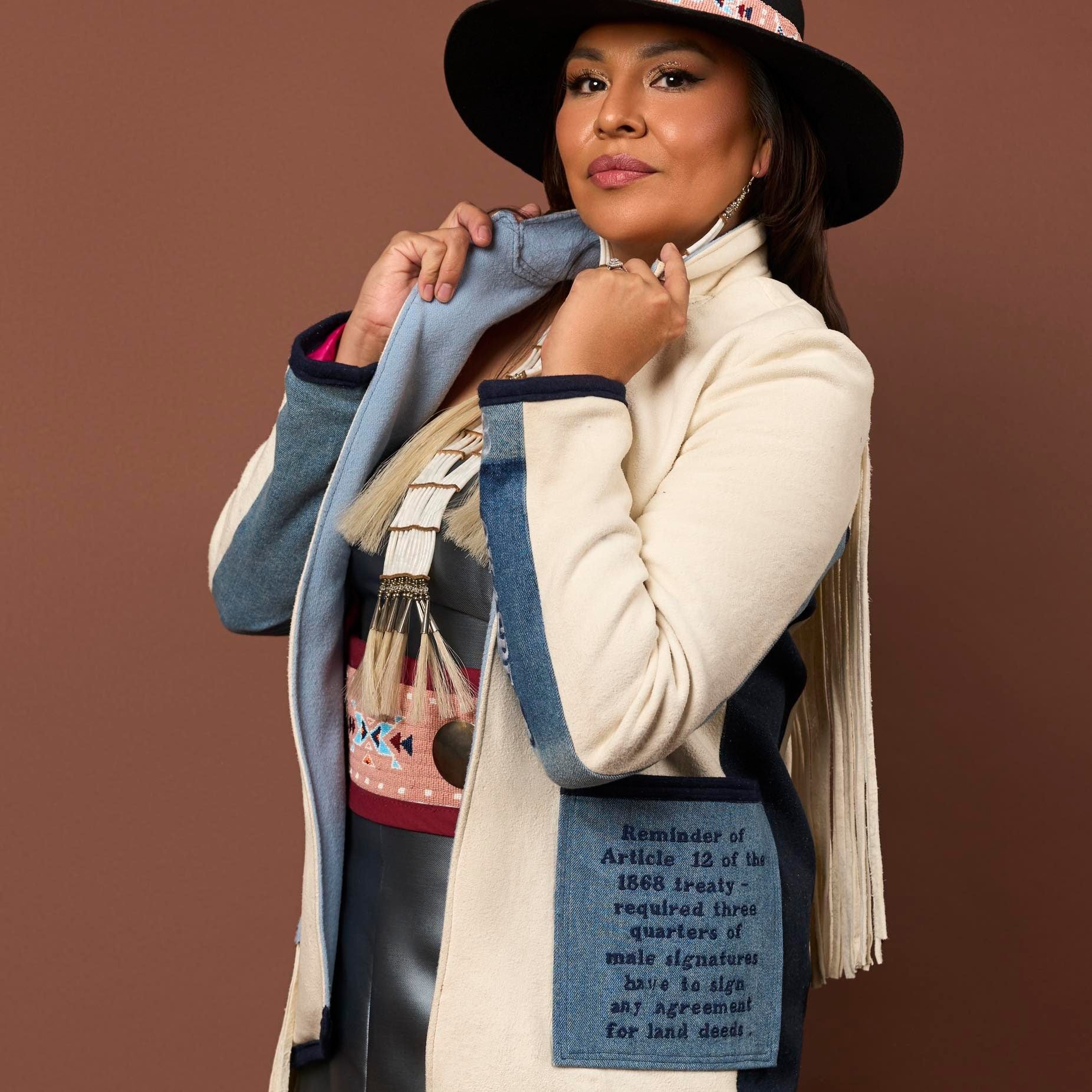
Kayla Lookinghorse wearing 1 of 1 Treaty Jacket 22. Photo by Native Creation Studios.
Within the first few months of 2023, many Indigenous people have made milestones as they work to Indigenize mainstream spaces across all industries. Sherry Pocknett (Mashpee Wampanoag), a chef at Sly Fox Den in Charlestown, Rhode Island, is now a finalist for the James Beard Foundation Award for Best Chef: Northeast. Chef Sean Sherman (Oglala Lakota) was recently named one of TIME magazine's 100 Most Influential People for 2023. Fashion designer Kayla Lookinghorse (Hunkpapa/Itazipco Lakota) debuted her new empowerment collection for Klookinghorse at the RES Fashion Show in Las Vegas. Def-I, a Recording Academy voting member, attended the Grammys. Urban Indigenous Collective launched new tracking technology as a resource for Missing and Murdered Indigenous Women, Girls, and Two-Spirits. Storyteller, writer, poet, and activist Andrina Smith (Shinnecock) launched “MLK: Now is the Time,” at SXSW, an immersive journey that explores key themes of Dr. King’s speech and highlights systemic inequities that persist in our society. And within the last year, the first Tribal trade networks in the cannabis industry were established through the Indigenous Cannabis Industry Association.
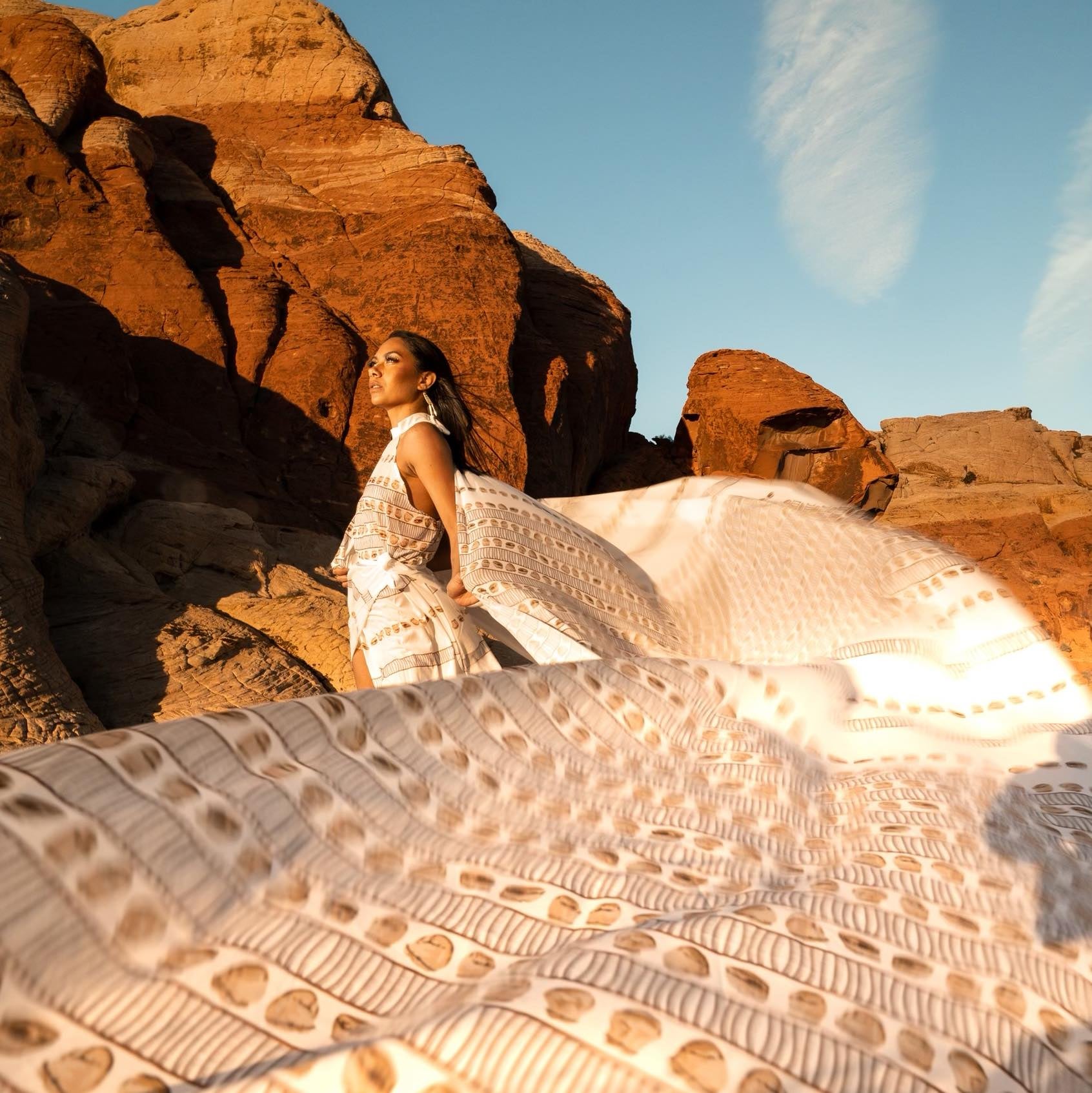
Model Selena Perry of the Narragansett Nation in the Klookinghorse Photo by Ro'tography Images.
While corporations around the world are working to find ways to become more sustainable, Indigenous Peoples have been practicing regenerative living for thousands of years. We have developed practices that allow us to live in harmony with nature and maintain a sustainable way of life. Indigenous Peoples see ourselves as part of the natural world and believe that everything is interconnected. We understand the importance of biodiversity and the need to protect and preserve natural resources for future generations. Indigenous Knowledge and practices have been developed over millennia by communities living in harmony with their environment. Including Indigenous Peoples in industries such as music, film, and technology can lead to a more sustainable and equitable world for all.
Listen to the Indigenous panels at SXSW:
-
Right Relationship and Plant Medicine
-
Tribal Nations, U.S. Treaties, & Human Flourishing
-
Killing John Smith: Indigenous Women Storytellers
-
U.S. Indian Boarding Schools: The Stolen Generations
-
No More Silos: Advancing Cannabis Social Equity
—Chenae Bullock is an enrolled Shinnecock Indian Nation Tribal member and descendant of the Montauk Tribe in Long Island, New York. She is a community leader, water protector, cultural preservationist, Indigenous perspective historian, and humanitarian. She is also the founder and CEO of Moskehtu Consulting, LLC, and a 2022-2023 Cultural Survival Writer in Residence.
Top photo: Julia Mande, Sutton King, and Chenae Bullock at SXSW. Photo by Rebekah Wise.
